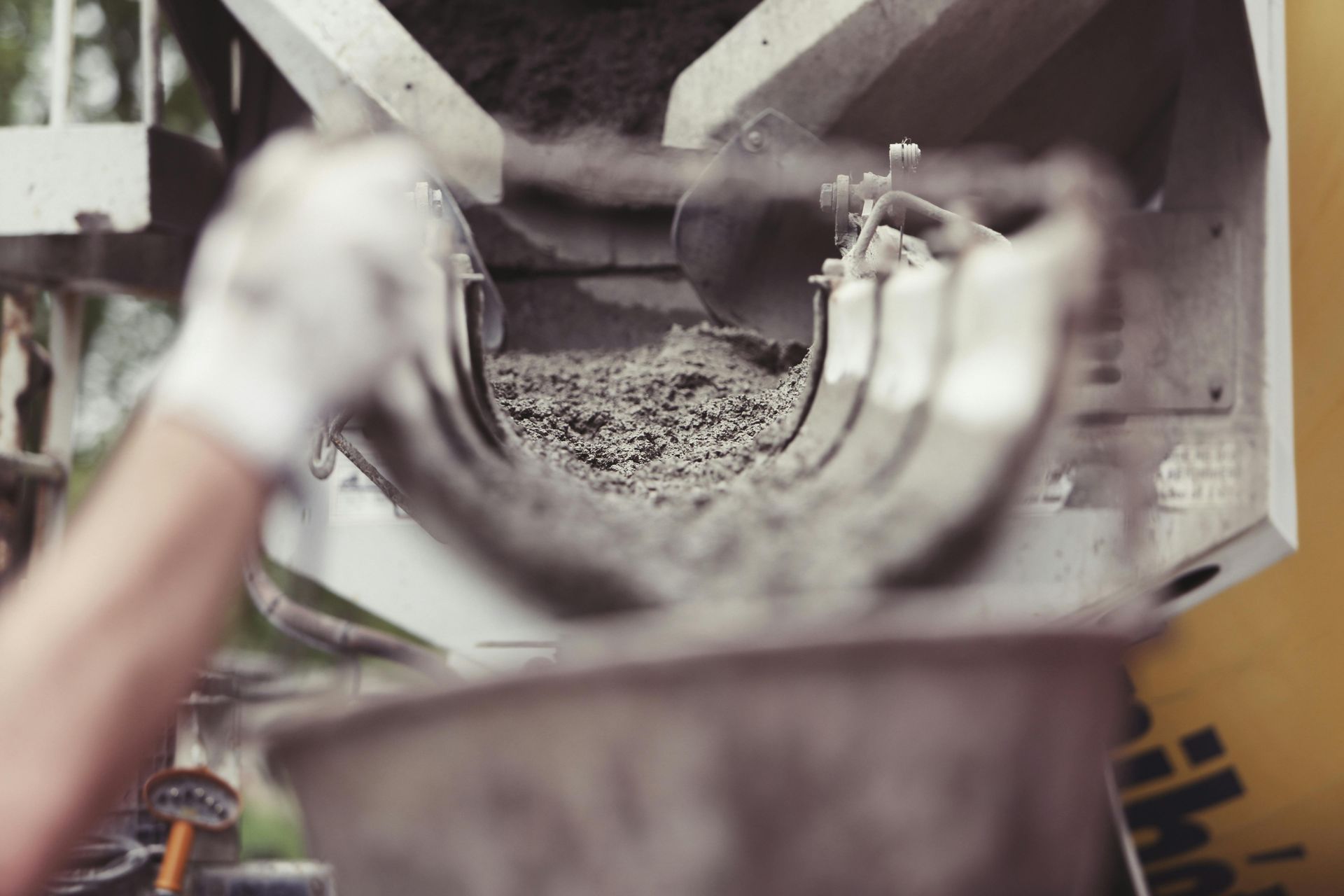When Can You Pour Concrete in Red Deer? Your Complete Guide
Red Deer Concrete
Planning a concrete project in Red Deer, Alberta? Timing is everything when it comes to successful concrete installation. The harsh prairie winters and unpredictable fall weather can make or break your construction timeline, leaving you wondering when it's safe to pour and when you've missed your window.
Getting the timing right isn't just about avoiding inconvenience—it's about protecting your investment. Concrete poured too late in the season faces serious risks including freeze damage, poor curing, and structural failure that can cost thousands to repair. Understanding Red Deer's unique climate patterns and seasonal challenges will help you make informed decisions about your concrete projects.
This guide breaks down everything you need to know about concrete pouring timelines in Red Deer, from optimal weather conditions to last-minute preparation strategies that can extend your construction season safely.
Understanding Red Deer's Climate Challenges
Red Deer sits in Alberta's parkland region, experiencing a continental climate with distinct seasonal variations that directly impact concrete work. The city typically sees its first hard frost between mid to late September, with temperatures consistently dropping below freezing by late October.
Winter arrives early and stays late, with sub-zero temperatures lasting from November through March. Snow can appear as early as September and persist until May, creating a narrow window for outdoor concrete work. The average annual temperature hovers around 2°C (36°F), but daily fluctuations can be dramatic, especially during shoulder seasons.
Spring brings its own challenges with rapid temperature swings, heavy precipitation, and ground thaw conditions that affect site preparation. These climate realities mean concrete contractors in Red Deer must be strategic about project timing to ensure successful installations.
Key Factors That Determine Concrete Pouring Success
Several environmental factors work together to determine whether conditions are suitable for concrete placement in Red Deer.
Temperature Requirements
Fresh concrete needs consistent temperatures above 5°C (41°F) during the initial curing period. When temperatures drop below this threshold, the chemical reaction that hardens concrete slows dramatically or stops entirely. Freezing temperatures can cause permanent damage by creating ice crystals that expand and crack the concrete matrix.
The ideal temperature range for concrete pouring falls between 10°C and 25°C (50°F to 77°F). Within this range, concrete achieves proper hydration and develops its intended strength characteristics without requiring special cold-weather protection measures.
Precipitation and Moisture
Rain, snow, or excessive moisture can compromise concrete placement and finishing. Fresh concrete surfaces are particularly vulnerable to water damage, which can weaken the surface layer and create scaling problems later. Ground conditions must also be considered—frozen soil, standing water, or muddy conditions make proper preparation impossible.
Ground Conditions
The subgrade must be properly prepared and unfrozen to accept concrete placement. Frozen ground creates an unstable base that can shift during thaw cycles, leading to cracking and settlement issues. Proper drainage and compaction require workable soil conditions that aren't available during frozen periods.
Recommended Timeframes for Concrete Work in Red Deer
Based on Red Deer's climate patterns and concrete requirements, the optimal window for concrete work typically runs from late April through early October.
Prime Season: May Through September
The safest and most reliable period for concrete placement extends from May 1st through September 30th. During these months, daytime temperatures consistently exceed minimum requirements, and overnight lows rarely threaten fresh concrete. This period offers the most predictable weather patterns and allows for proper curing without special protective measures.
Extended Season: Early April and October
With proper planning and weather monitoring, the concrete season can sometimes extend into early April and through October. However, these shoulder periods require careful attention to weather forecasts and may necessitate cold-weather protection measures.
Latest Recommended Pour Date
The latest recommended date for standard concrete placement in Red Deer typically falls around October 15th. After this date, the risk of unexpected freezes and consistently cold temperatures makes successful concrete placement increasingly difficult without specialized techniques and equipment.
Preparing for Late-Season Concrete Pours
When project schedules push concrete work toward the end of the season, additional preparation becomes essential for success.
Site Preparation Strategies
Late-season pours require enhanced site protection measures. This includes ground insulation to prevent freezing, wind barriers to reduce heat loss, and adequate drainage to prevent water accumulation. The subgrade should be prepared well in advance and protected from freezing using insulation blankets or heated enclosures when necessary.
Concrete Mix Modifications
Cold-weather concrete mixes often incorporate accelerating admixtures that speed up the chemical reactions responsible for hardening. These admixtures help concrete achieve sufficient strength more quickly, reducing vulnerability to freeze damage. Higher cement content and reduced water-to-cement ratios can also improve cold-weather performance.
Curing Protection
Late-season concrete requires protective curing measures such as insulation blankets, heated enclosures, or curing compounds designed for cold weather. The concrete must be protected from freezing for at least 72 hours while it develops initial strength, and longer protection periods may be necessary depending on ambient temperatures.
Risks of Late-Season Concrete Placement
Pushing concrete work too late in the season introduces several significant risks that can compromise project success.
Freeze-Thaw Damage
The most serious risk comes from freeze-thaw cycles during the critical early curing period. When fresh concrete freezes, expanding ice crystals disrupt the concrete matrix, creating permanent weakness and potential structural failure. This damage cannot be repaired and typically requires complete replacement.
Inadequate Strength Development
Cold temperatures slow the chemical reactions that give concrete its strength. Concrete that doesn't achieve adequate strength before winter can suffer from scaling, cracking, and premature deterioration. This problem often doesn't become apparent until spring, when the damage reveals itself.
Increased Costs
Late-season concrete work requires additional protection measures, specialized materials, and potentially emergency procedures if weather conditions deteriorate unexpectedly. These factors can significantly increase project costs compared to work completed during optimal weather periods.
Expert Recommendations and Local Considerations
Local concrete professionals in Red Deer emphasize the importance of conservative scheduling when planning concrete projects. Many contractors prefer to complete major concrete work by early October to avoid weather-related complications.
The City of Red Deer requires building permits for most concrete structures, and inspections must be completed during reasonable weather conditions. Planning concrete work too late in the season can create scheduling conflicts with municipal inspectors and delay project completion.
Professional contractors recommend monitoring extended weather forecasts at least two weeks before planned concrete placement, with contingency plans for weather delays. Having backup dates and protection equipment ready can mean the difference between project success and costly delays.
Making Smart Decisions About Your Concrete Timeline
Successful concrete placement in Red Deer requires balancing project schedules with realistic weather expectations. While the absolute latest pour date might extend into October under ideal conditions, the safest approach involves completing concrete work by late September.
Start planning your concrete projects early in the year, allowing flexibility for weather delays and optimal curing conditions. When late-season work becomes unavoidable, invest in proper cold-weather protection measures and work with experienced local contractors who understand Red Deer's climate challenges.
Remember that rushing concrete work to beat winter weather often leads to problems that are far more expensive than seasonal delays. Patience and proper timing will ensure your concrete investment performs reliably for years to come.


